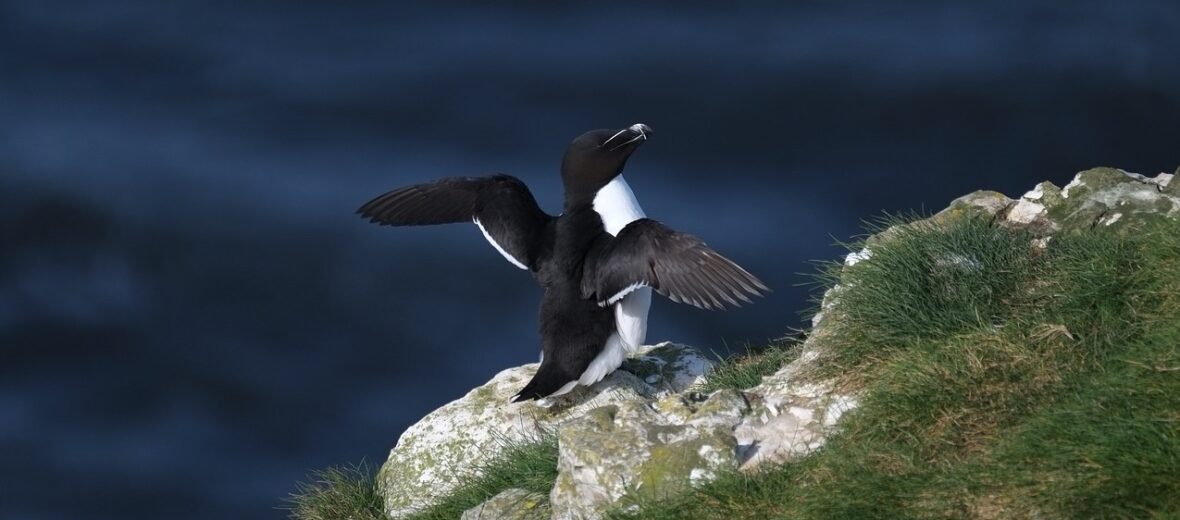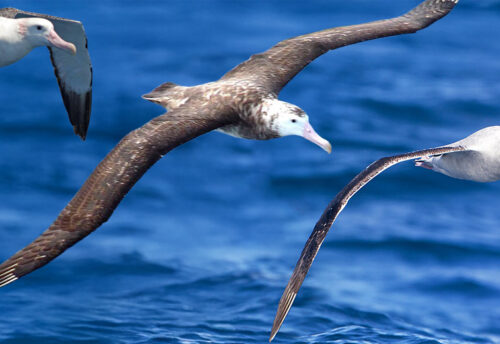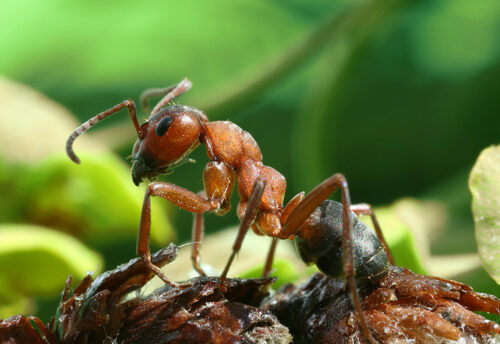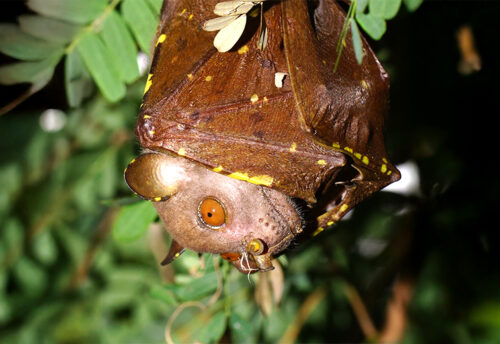
The razorbill, aka razor-billed auk or lesser auk, is a seabird that can be found along the sub-Arctic and boreal Atlantic waters of the countries of North America, Greenland, Iceland, Europe, Russia, and Africa. Even though these birds face the threats of habitat loss and destruction at the hands of mining and quarrying; hunting; trapping; overfishing; invasive species, and with them disease, predation, and competition for food; pollution; and climate change, and with it temperature fluctuations, storms, and flooding at their nesting sites, these birds are still listed as Least Concern by the IUCN. Their numbers are also increasing.
First the Stats…
Scientific name: Alca torda
Weight: Up to 1.6 lbs.
Length: Up to 17 inches
Wingspan: Up to 26.38 inches
Lifespan: Up to 13 years
Now on to the Facts!
1.) These birds love colder water and thrive at ocean temperatures of around 59ºF.
2.) Razorbill populations number an estimated 1,660,000 wild individuals.
3.) The razorbill was protected in the United States by the Migratory Bird Treaty Act, in 1918.
4.) Razorbills are very social birds that gather into large flocks of not only their own kind but also of other auk species.
5.) Up to 44% of their time is spent foraging for food.
But wait, there’s more on the razorbill!
6.) Chicks are typically fed a single small fish, while the adults can gorge on several small fish or a single large fish.
7.) Upwards of 70% of the razorbill’s breeding population breeds on the shores of Iceland.
Did you know…?
These birds can dive to depths of up to 395 feet.
8.) They are piscivores (eat aquatic life) that feed on sand lance, capelin, young cod, sprats, herring, polychaetes, and crustaceans.
9.) Razorbills are monogamous (mate for life).
10.) Breeding occurs each year until they reach an older age, where they’ll breed every other year.
But wait, there’s still more on the razorbill!
11.) Mated pairs will typically use the same nesting site each year.
12.) Females lay a single egg from April – May.
Did you know…?
Chicks leave the nest in up to just 23 days.
13.) The male will guard the site from predators and other males.
14.) Both parents take turns incubating the single egg for up to 35 days.
15.) The chick is hatched semi-precocial (mostly self sufficient).
16.) Polar bears, crows, gulls, peregrine falcons, ravens, jackdaws, foxes, and rats all prey on razorbills, their chick, or their egg.
Now a Short Razorbill Video!
Be sure to share & comment below! Also, check out the Critter Science YouTube channel. Videos added regularly!
Want to suggest a critter for me to write about? Let me know here.
Some source material acquired from:



